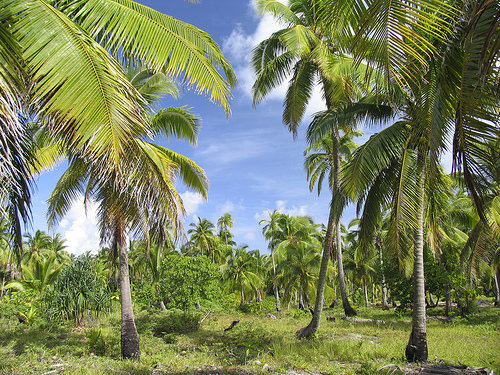Bligh records his impressions of the islanders themselves. And he notes that they resemble people from Hervey's Islands which was the name given to the Cook Islands by Captain Cook. This observation is not surprising as Bligh had been the ship's Master on HMS Resolution during Cook's third and final voyage in April, 1777 which passed through the Islands.
"The people that came off to us did not differ in appearance from the natives of Hervey's Islands, seen in Captain Cook's last voyage, though much more friendly and inoffensive in their manners. They were tattooed across the arms and legs, but not on the loins or posteriors, like the people of Otaheite [Tahiti]. From their knowledge of iron they have doubtless communication with Hervey's Islands, which are not more than eighteen leagues distant from them."

This is a detail from Bligh's map drawing. He also noted:
"The island of Wytootackee is about ten miles in circuit; its latitude from 18 degrees 50 minutes to 18 degrees 54 minutes south, and longitude 200 degrees 19 minutes east. A group of small keys, eight in number, lie to the south-east, four or five miles distant from Wytootackee and a single one to the west-south-west; the southernmost of the group is in latitude 18 degrees 58 minutes south."
Note the spelling of the island's name as Wytootackee and Bligh's own signature (written as 'Wm Bligh')
The sketches are part of the collection of the State Library of New South Wales. The whole of Bligh's book, including an account of the infamous mutiny, is available on line thanks to the amazing Project Gutenberg
Click here to download it





